As we witness the evolution of contemporary dance, it’s important to acknowledge the pioneers and influencers who paved the way for the art form as we know it today. From the expressive movements of Martha Graham to the daring choreography of Hofesh Shechter, these ten influential contemporary dancers have left a lasting impact on both the dance world and popular culture. Let’s delve into their styles and legacies to appreciate their contributions to the art of movement.
1. Martha Graham
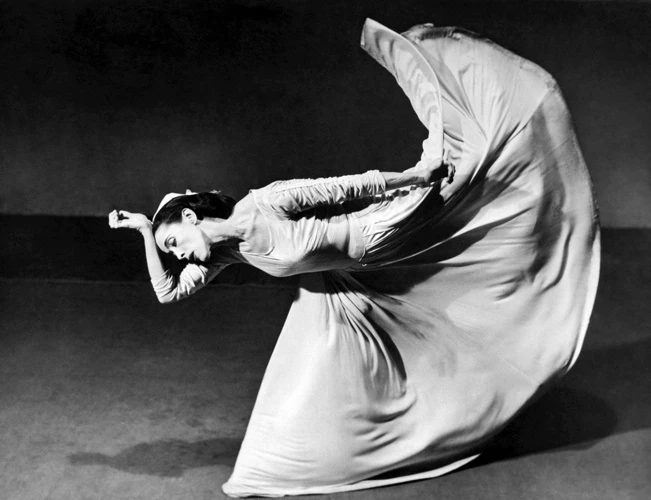
Martha Graham is a true icon of contemporary dance and a trailblazer for women in the arts. Her work has had a significant impact on the evolution of modern dance, shaping the very essence of the art form. Her innovative techniques and choreography have influenced countless dancers and choreographers over the years, leaving an indelible mark on the contemporary dance scene. In this section, we will explore Graham’s unique style and the profound influence she has had on the world of contemporary dance. To learn more about the evolution of contemporary dance, check out our article on the evolution of contemporary dance.
Style
Contemporary dance is a dynamic and ever-evolving art form that defies classification into a single style or technique. However, there are certain traits that are generally associated with contemporary dance.
1. Fluidity and Freedom of Movement: One of the hallmarks of contemporary dance is its emphasis on fluid and unrestricted movement. Unlike ballet, which often focuses on crisp and controlled movements, contemporary dance allows for a wide range of motion and a greater degree of experimentation.
2. Emotional and Expressive: Contemporary dance places a strong emphasis on conveying emotion and expressing ideas through movement. Dancers often use gestures and facial expressions to communicate complex ideas and emotions.
3. Improvisation: Many contemporary dance pieces incorporate elements of improvisation, where dancers are given the freedom to explore movement in the moment. This allows for a greater level of spontaneity and creativity in the dance.
4. Interdisciplinary Approach: Contemporary dance often draws on other art forms, such as music, theater, and visual art, to create multi-faceted performances that engage both the senses and the mind.
5. Innovative Use of Technology: With the rise of new technologies, many contemporary dance performances are incorporating digital elements such as projections and interactive installations, blurring the lines between performance and installation art.
Contemporary dance is a highly diverse and constantly evolving field that embraces experimentation, self-expression, and interdisciplinary collaboration. It has had a significant impact on both the dance world and popular culture at large, and continues to push boundaries and challenge conventions.
Anchor: Contemporary Dance vs Other Styles
Influence
The influence of each of these contemporary dancers goes beyond their own work and has impacted the wider world of dance.
| Martha Graham | Graham’s technique and style have been taught and adapted by countless dancers and companies worldwide. She is also credited with the development of modern dance as a concert art form. |
| Alvin Ailey | Ailey’s work with the Alvin Ailey American Dance Theater has not only brought African American cultural experiences to the forefront of contemporary dance, but also popularized modern dance among wider audiences. |
| Merce Cunningham | Cunningham’s embrace of technology and collaboration with artists of other disciplines, such as composer John Cage, paved the way for experimentation and interdisciplinary work in contemporary dance. |
| Pina Bausch | Bausch’s creation of Tanztheater, a style that blends dance and theater, has influenced the work of many contemporary choreographers. Her use of movement to express emotions and relationships has also inspired generations of dancers. |
| Mikhail Baryshnikov | Baryshnikov’s unparalleled virtuosity and artistic collaborations have contributed to the elevation of contemporary dance to an elite status. He has also founded the Baryshnikov Arts Center, which supports interdisciplinary work and emerging artists. |
| Twyla Tharp | Tharp’s integration of popular music and dance has influenced the use of music in contemporary dance, and her collaborations with Mikhail Baryshnikov and other prominent dancers and musicians have brought attention to contemporary dance in popular culture. |
| William Forsythe | Forsythe’s deconstruction and subversion of traditional ballet and modern dance forms have influenced a generation of choreographers. He has also established the Forsythe Company, an ensemble that showcases his innovative approach to movement and performance. |
| Akram Khan | Khan’s fusion of traditional Indian kathak dance with contemporary styles has expanded the definition of contemporary dance and challenged cultural boundaries in the dance world. His productions have also incorporated political themes and engaged with current events. |
| Crystal Pite | Pite’s exploration of human relationships and emotion through movement has gained her a reputation as a master storyteller in contemporary dance. She has also founded Kidd Pivot, a dance company known for its interdisciplinary collaborations and innovative approach to choreography. |
| Hofesh Shechter | Shechter’s blending of contemporary dance with high-energy music and theatricality has drawn comparisons to punk rock and influenced a generation of young choreographers. He has also established his own dance company, which has brought his unique style to audiences around the world. |
It’s clear that the impact of these influential contemporary dancers has pushed the boundaries of what is possible in contemporary dance and has opened doors for the future of the art form. Whether through technological innovations or interdisciplinary collaborations, each has left a lasting impression on the dance world.
2. Alvin Ailey
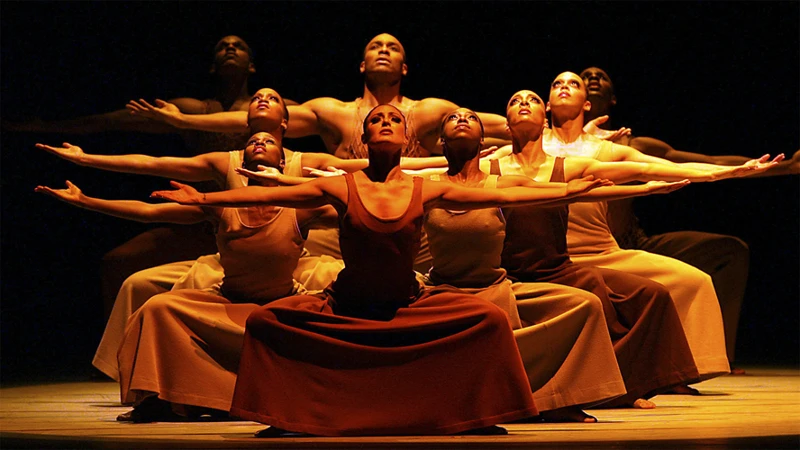
Alvin Ailey’s contribution to contemporary dance is monumental, and he is widely recognized as one of the most influential choreographers of our time. Ailey’s style was deeply rooted in African American culture and he drew inspiration from the blues, spirituals, and jazz music. He wanted to tell stories that were personal to him and to the black experience, and he did so through dance in a way that resonated with audiences all over the world. Ailey’s influence can still be felt today, particularly through the work of his eponymous dance company, which continues to celebrate and expand upon his legacy. Those interested in learning more about the intersection of music and contemporary dance may want to explore this article.
Style
Martha Graham’s style can be described as a fusion of classical ballet with modern dance. Her movements were characterized by sharp and angular shapes, often emphasizing the tension between contraction and release. Her technique, known as the Graham technique, focuses on the use of the core muscles to initiate movement and the breath as a means of expression. Graham was known for her dramatic theatricality and her ability to communicate complex emotions through movement.
Alvin Ailey developed his own unique style, drawing on his background in jazz and African dance. His choreography was known for its fluidity and sensuality, often incorporating elements of improvisation and storytelling. Ailey’s most famous work, “Revelations,” is a celebration of African American culture and gospel music.
Merce Cunningham was known for his experimentation with movement and his focus on the dancer’s relationship with space, time, and music. He often eschewed traditional narrative structures in favor of exploring movement for its own sake. His choreography required a high level of technical skill and athleticism, incorporating elements of both ballet and modern dance.
Pina Bausch created a unique style of dance theater that drew on elements of surrealism, expressionism, and minimalism. Her work often featured a large cast of performers and incorporated everyday movements and actions, as well as elements of improvisation. Bausch’s most famous works, such as “Café Müller” and “The Rite of Spring,” were known for their emotional intensity and dramatic impact.
Mikhail Baryshnikov was trained in the classical ballet tradition, but he also embraced many aspects of modern dance. His style was characterized by a virtuosic elegance and a focus on fluidity of movement. Baryshnikov was known for his ability to seamlessly blend different dance styles, creating a unique and dynamic style of his own.
Twyla Tharp was known for her eclectic style, which drew on elements of ballet, modern dance, and jazz. Her choreography often incorporated complex rhythmic patterns and intricate partnering work. Tharp was also known for her collaborations with musicians and other artists, creating works that blurred the boundaries between different art forms.
William Forsythe challenged traditional ideas about dance and movement, creating works that were innovative and intellectually challenging. His style incorporated elements of ballet, modern dance, and postmodernism, often incorporating unexpected movements and gestures. Forsythe was particularly known for his explorations of the relationship between the individual dancer and the larger ensemble.
Akram Khan was known for his fusion of classical Indian dance with contemporary dance styles. His choreography often incorporated intricate footwork and complex rhythmic patterns. Khan was also known for his collaborations with artists from other disciplines, creating works that blended dance with music, theater, and visual art.
Crystal Pite developed a unique and powerful style that drew on elements of ballet, modern dance, and theater. Her choreography was known for its emotional intensity and its ability to create powerful narratives through movement. Pite was particularly known for her use of group work and her ability to create complex and intricate partnering sequences.
Hofesh Shechter was known for his explosive and high-energy style, drawing on his background in both contemporary dance and rock music. His work often featured large ensembles of dancers moving in unison, creating a powerful and visceral impact. Shechter was particularly known for his use of lighting and staging to create a dynamic and immersive performance experience.
If you want to learn more about contemporary dance techniques, take a look at our article on Contemporary Dance Techniques. Additionally, if you’re interested in the work of Pina Bausch, you might want to explore our article on The Life and Work of Pina Bausch. Finally, if you’re curious about the role of improvisation in contemporary dance, take a look at our article on Improvisation in Contemporary Dance.
Influence
Influence:
Martha Graham is considered the pioneer of modern dance and has had a tremendous impact on the development of contemporary dance. Her innovative techniques, such as the “contract and release,” have been widely adopted by dance schools and choreographers around the world. Her company, the Martha Graham Dance Company, has also been instrumental in promoting modern dance and has influenced generations of dancers.
Alvin Ailey‘s influence extends far beyond the world of dance. Ailey’s signature style, which focused on African American experiences, has become an important part of American culture. The Alvin Ailey American Dance Theater, which Ailey founded in 1958, is one of the most renowned dance companies in the world. Ailey’s work has inspired countless dancers and choreographers, and his commitment to social justice has left a lasting impact on the dance world and beyond.
Merce Cunningham‘s influence can be seen in the way that contemporary dance is taught and performed today. He was one of the first choreographers to embrace technology, utilizing computers and other digital tools to create new works. Cunningham’s partnership with avant-garde composer John Cage also broke new ground in the world of dance and music, paving the way for future collaborations between choreographers and composers.
Pina Bausch is known for her unique and visceral approach to dance, which often incorporated elements of theater and performance art. Her influence can be seen in the work of many contemporary choreographers, who have embraced the use of props, elaborate sets, and costumes to create immersive and unforgettable performances. Bausch’s legacy also includes the Tanztheater (“dance theater”) movement, which she helped to popularize.
Mikhail Baryshnikov is one of the most celebrated dancers of all time, and his influence on contemporary dance extends well beyond his own performances. Baryshnikov has worked with some of the most renowned choreographers of the 20th century, and his collaborations have helped to push the boundaries of what is possible in dance. He has also been a passionate advocate for dance education and has played an important role in increasing the visibility of contemporary dance in popular culture.
Twyla Tharp‘s influence on contemporary dance is perhaps best seen in the way that she bridged the worlds of commercial and concert dance. Tharp was one of the first choreographers to work with pop music, and her work has been featured in a number of films and television shows. Her groundbreaking collaborations with artists like David Byrne and Billy Joel helped to bring contemporary dance to new audiences and inspire a new generation of choreographers.
William Forsythe is known for his avant-garde approach to dance, which often incorporates elements of performance art, technology, and classical ballet. His work has been influential both in the field of contemporary dance and in the worlds of visual art and theater. Forsythe’s emphasis on innovation and experimentation has inspired a new generation of choreographers to push the boundaries of what is possible in dance.
Akram Khan‘s work is notable for its blending of classical Indian dance with contemporary forms. His fusion of traditional and modern techniques has made him one of the most acclaimed choreographers of his generation. Khan’s works often deal with themes of identity and displacement, and his commitment to social justice has helped to make his work both relevant and impactful.
Crystal Pite is known for her emotionally charged choreography, which often incorporates elements of theater and storytelling. Her work has been widely recognized for its ability to connect with audiences and create a powerful sense of shared experience. Pite’s influence can be seen in the way that many contemporary choreographers now incorporate elements of narrative and theater into their own work.
Hofesh Shechter has become known for his unique style, which combines elements of contemporary dance with street dance and other popular forms. His work often explores themes of violence and conflict, and is notable for its use of percussive music and powerful physicality. Shechter’s influence on contemporary dance can be seen in the way that many choreographers are now experimenting with new forms and styles to create work that is both relevant and challenging.
These influential contemporary dancers have left a lasting impact on the world of dance, inspiring countless dancers and choreographers to innovate and push the boundaries of what is possible. Their work continues to shape the field of contemporary dance and has helped to make it an important part of both popular culture and high art. /impact-tech-contemporary-dance/
3. Merce Cunningham
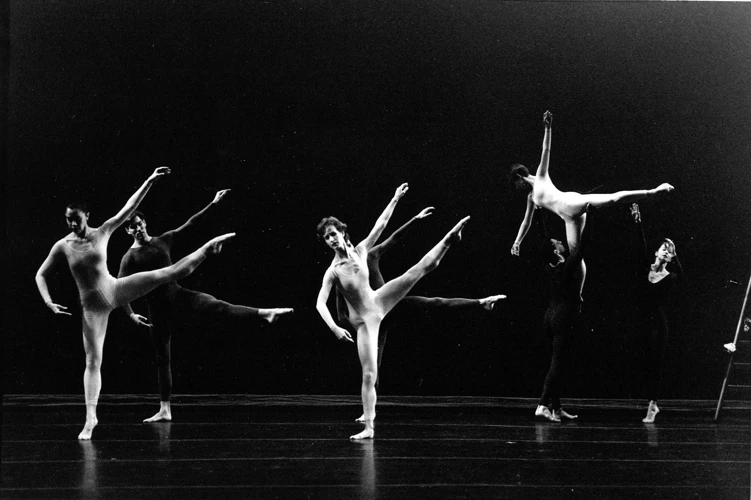
Merce Cunningham, known for his avant-garde approach to dance, was a pioneering figure in modern dance. His contributions have left a lasting impact on the world of dance, influencing generations of dancers and choreographers alike. Cunningham’s style is characterized by his use of chance procedures and his belief in the autonomy of movement. His unique approach to dance has cemented his place as one of the most important figures in the history of contemporary dance. Cunningham’s legacy has made an indelible mark on the dance world and continues to shape the art form to this day.
Style
When it comes to discussing the style of these influential contemporary dancers, it’s important to note that each dancer had their own unique approach and influence on the dance world. Below are some brief descriptions of their respective styles:
Martha Graham: Graham developed a technique based on the idea of contraction and release. Her movements were often sharp, angular, and rooted in emotion, with a focus on the expression of the human experience through dance.
Alvin Ailey: Ailey’s style was rooted in the African-American cultural experience, and reflected a variety of different influences from African dance traditions to gospel music. He blended these elements with modern and ballet techniques to create a dynamic and powerful style that celebrated the diversity of the African-American experience.
Merce Cunningham: Cunningham was known for his avant-garde approach to dance, which involved a lot of improvisation and experimentation. His style was highly intellectual and focused on the exploration of movement as a concept in and of itself, rather than a means of expressing emotion or narrative.
Pina Bausch: Bausch’s style was often described as “tanztheater,” or dance theater, and involved a lot of stylized, theatrical movement set against elaborate sets and costumes. Her works often explored themes of love, relationships, and the human condition.
Mikhail Baryshnikov: Baryshnikov was trained in classical ballet, and his style reflected this with a focus on grace, fluidity, and precise technique. However, he also brought a unique athleticism and sense of spontaneity to his performances that set him apart from other ballet dancers of his time.
Twyla Tharp: Tharp’s style was known for its eclectic blend of different dance genres, including ballet, modern, and jazz. She was also known for incorporating elements of pop culture and everyday movement into her works, making her pieces feel accessible and relatable to audiences.
William Forsythe: Forsythe’s style was highly experimental and focused on breaking down traditional dance conventions. He often played with different elements of dance, including timing, rhythm, and spatial relationships, to create pieces that were dynamic and unpredictable.
Akram Khan: Khan’s style draws heavily on traditional Indian kathak dance, but also incorporates elements of contemporary dance and theater. His works often explore themes of cultural identity and conflict, and are known for their powerful athleticism and emotional depth.
Crystal Pite: Pite’s style is often described as “visceral” and “expressive,” and involves a lot of intricate and emotive movement. Her works often explore themes of human relationships and emotion, and are characterized by their complex choreography and use of large ensembles.
Hofesh Shechter: Shechter’s style is known for its powerful, dynamic movement and use of group formations. His works often incorporate elements of both contemporary dance and physical theater, and explore themes of violence, community, and human connection.
The rise of contemporary dance in popular culture has brought these styles to a wider audience, and many of these choreographers have made a significant impact on the dance world and beyond.
Influence
Influence refers to the impact that a dancer or choreographer has had on the dance world as a whole. Each of the 10 influential contemporary dancers on this list has left their mark on the industry in a unique and unforgettable way. Here are some of the ways they have influenced the world of dance:
The influence of these 10 dancers and choreographers has helped to shape the world of contemporary dance and cement its place as an important and influential art form. Their work has inspired countless others and helped to elevate dance to new heights of expression and creativity. The rise of contemporary dance in popular culture can also be attributed in part to their groundbreaking work.
4. Pina Bausch
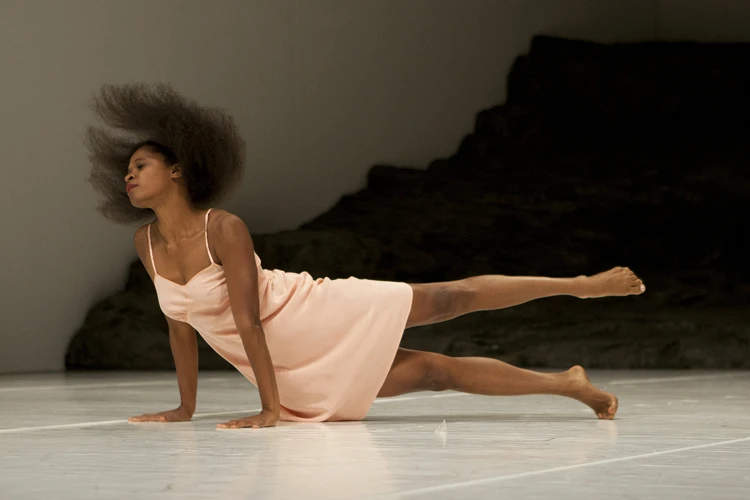
Moving onto another influential and unconventional contemporary dancer, we have Pina Bausch. Bausch was a German choreographer and dancer who founded the Tanztheater Wuppertal Pina Bausch, a dance company that became known for its unique and eclectic style. Bausch’s approach to dance was deeply emotional, often exploring themes of love, identity, and loss through her performances. Her work pushed the boundaries of what was considered traditional dance, incorporating elements of theater and visual art to create a new form entirely. Bausch’s impact on the world of contemporary dance is undeniable, and her legacy continues to inspire dancers and choreographers today.
Style
Style:
- Martha Graham: Known for her dramatic and emotional style, Martha Graham’s technique is based on the contraction and release of muscles to express human emotions, often using a floor-based approach.
- Alvin Ailey: Ailey’s style was a blend of ballet, modern, and jazz dance with a focus on African American cultural experiences and struggles. His choreography highlighted the human spirit and brought social and political issues to the forefront of the dance world.
- Merce Cunningham: Cunningham’s choreography was known for breaking away from traditional forms of movement and prioritizing randomness and chance within highly structured dance pieces. His style was highly experimental and used technology in his works.
- Pina Bausch: Bausch’s style was characterized by a blend of theatrical and dance elements, often incorporating everyday movements and actions with highly stylized movements. Her works were highly emotional and often dealt with themes of love, relationships, and societal expectations.
- Mikhail Baryshnikov: Baryshnikov’s style is rooted in classical ballet but also encompasses modern and contemporary dance. He is known for his spectacular jumps, turns, and technical abilities, combined with a deep emotional expression.
- Twyla Tharp: Tharp’s style is a blend of classical ballet, modern, and jazz dance, with an emphasis on the use of everyday movements and gestures in her works. Her choreography often has a quirky sense of humor and often incorporates pop culture references.
- William Forsythe: Forsythe’s style is highly innovative and experimental, often utilizing classical ballet and modern dance forms but subverting them with unexpected movements and partnering. His work emphasizes the physicality of movement and the body’s potential for endless possibilities.
- Akram Khan: Khan’s style fuses Kathak, a classical Indian dance form, with contemporary dance, and is characterized by intricate rhythms, complex footwork, and a focus on storytelling through movement.
- Crystal Pite: Pite’s style features a blend of classical ballet and contemporary dance, with an emphasis on fluidity and the interplay between fast and slow movements. Her choreography often explores themes of power dynamics, relationships, and emotional struggle.
- Hofesh Shechter: Shechter’s style is characterized by its blend of modern and traditional Jewish folk dance elements, along with a focus on rhythm and musicality. His works often incorporate political and social commentary, exploring themes of power, violence, and oppression.
In recent years, contemporary dance has seen a rise in popularity and has become increasingly influential in pop culture.
Influence
Influence section of each of the 10 influential contemporary dancers plays an important role in understanding their contribution to the development of contemporary dance.
| Dancer | Influence |
| — | — |
| Martha Graham | Martha Graham has influenced generations of modern dancers and choreographers. She pioneered a new dance form, which she called “contract-release,” and focused on breath and energy flow in her choreography. Her approach to modern dance revolutionized the way people thought about and approached dance, and many of her students went on to become prominent figures in the dance world. |
| Alvin Ailey | Alvin Ailey’s influence can be seen in both his choreographic style and his establishment of the Alvin Ailey American Dance Theater, which has become one of the most prestigious modern dance companies in the world. His works often tackled issues of race and spirituality, and his signature piece “Revelations” is considered a masterpiece of American modern dance. Ailey’s contributions transformed the dance world, making modern dance accessible to a wider audience. |
| Merce Cunningham | Merce Cunningham is known for his revolutionary approach to dance, which involved using chance as a choreographic tool. His work drew inspiration from everyday movement and the natural world, and he often collaborated with avant-garde artists such as John Cage and Jasper Johns. Cunningham’s influence can be seen in the many choreographers who have been inspired by his experimentation with movement and his use of technology in dance. |
| Pina Bausch | Pina Bausch’s choreography was noted for its theatricality and use of humor, as well as its exploration of gender roles and power dynamics. Her works were highly influential in the development of dance-theater, and her company, Tanztheater Wuppertal, continues to perform her works today. Bausch’s influence can be seen in the many choreographers who have been inspired by her unique blend of dance, theater, and performance art.|
| Mikhail Baryshnikov | Mikhail Baryshnikov’s influence on the world of dance cannot be overstated. He is widely regarded as one of the greatest dancers of the 20th century, and his work as a choreographer, artistic director, and producer has helped to bring modern dance to a wider audience. His ability to seamlessly blend classical ballet with contemporary styles has inspired countless choreographers and dancers around the world. |
| Twyla Tharp | Twyla Tharp’s influence can be seen in her tireless experimentation with movement and her unique blend of ballet and modern dance. Her work often draws inspiration from popular culture, and she has collaborated with musicians such as Billy Joel and David Byrne. Tharp’s influence on the dance world is evident in the many choreographers who have been inspired by her interdisciplinary approach to dance. |
| William Forsythe | William Forsythe’s influence can be seen in his groundbreaking approach to choreography, which involved deconstructing traditional ballet technique and exploring new ways of moving. His works often challenge the boundaries between dance and art, and his use of technology in dance has been highly influential. Forsythe’s legacy can be seen in the many choreographers who continue to be inspired by his innovative approach to movement. |
| Akram Khan | Akram Khan’s influence can be seen in his fusion of classical Indian Kathak dance with contemporary styles. His work often deals with themes of identity and cultural heritage, and he has collaborated with musicians such as Anish Kapoor and Nitin Sawhney. Khan’s influence on the dance world is evident in the many choreographers who have been inspired by his unique blend of traditional and modern dance forms. |
| Crystal Pite | Crystal Pite’s influence can be seen in her use of intricate partnering and her ability to create visceral, emotionally charged works. Her innovative choreographic style has earned her numerous awards and accolades, and she has worked with companies such as Nederlands Dans Theater and the Paris Opera Ballet. Pite’s influence on the dance world is evident in the many choreographers who have been inspired by her unique movement language. |
| Hofesh Shechter | Hofesh Shechter’s influence can be seen in his fusion of contemporary dance with Israeli folk dance and his creation of complex, highly physical works. His works often explore themes of violence and power, and he has collaborated with musicians such as Nitin Sawhney. Shechter’s influence on the dance world is evident in the many choreographers who have been inspired by his unique blend of dance styles. |
Contemporary dancers have had a far-reaching impact on the world of dance and the performing arts. Their contributions have helped to transform the way we think about movement and choreography, and have brought contemporary dance to a wider audience. Contemporary dance is becoming more popular now than ever before, and it is in large part thanks to these influential artists. To learn more about the recent rise of contemporary dance in popular culture, read our article on /rise-contemporary-dance-popular-culture/.
5. Mikhail Baryshnikov
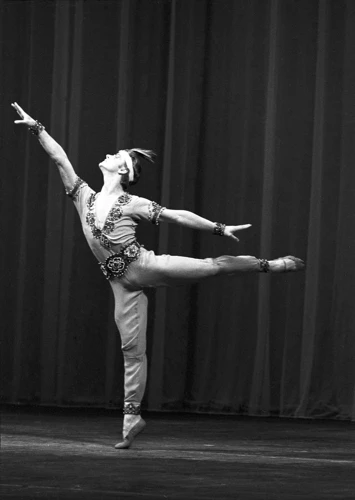
As we delve deeper into our list of influential contemporary dancers, we cannot help but feel overwhelmed by the sheer talent and artistry that each one possesses. Next on our list is a name that needs no introduction: Mikhail Baryshnikov. A true legend in the world of dance, Baryshnikov is known for his incredible technique, emotion, and showmanship. In this section, we will explore his unique style and the profound influence he has had on the world of dance.
Style
One of the most notable aspects of Martha Graham’s dance style is her emphasis on strong, sharp movements that evoke an emotional response from the audience. She also pioneered a new style of movement that was based on the natural movement of the body rather than the traditional balletic form. Graham’s choreography often explores themes of human expression and emotion, and her dancers are known for their powerful, dramatic performances.
Alvin Ailey’s style is deeply rooted in African American culture and draws inspiration from modern dance, jazz, and blues music. His choreography often explores issues of race, community, and spirituality. Ailey’s signature piece “Revelations” is a testament to his style, and it features a blend of gospel and modern dance that has made it a timeless classic.
Merce Cunningham is known for his use of chance and randomness in his choreography. His style emphasizes controlled, fluid movements that often appear spontaneous and improvised. Cunningham also incorporated technology into his work, collaborating with electronic music pioneers like John Cage to create innovative pieces that merged dance and technology.
Pina Bausch’s style is characterized by its use of emotion, humor, and abstract imagery. She often incorporated elements of theater and performance art into her choreography, and her dancers were known for their expressive, often unconventional movements. Bausch’s work often explores themes of love, loss, and isolation in a way that is both deeply personal and universally resonant.
Mikhail Baryshnikov is known for his technical prowess and his ability to seamlessly blend classical ballet with contemporary movement. His style emphasizes grace, precision, and athleticism, and his performances are often characterized by their effortless fluidity. Baryshnikov’s work has helped to bridge the gap between classical ballet and modern dance, and his influence can still be seen in the work of many contemporary dancers today.
Twyla Tharp’s style is known for its musicality and its use of diverse movement styles. She often combines classical ballet with modern dance and jazz movements, creating a unique and eclectic style that is both accessible and challenging. Tharp’s choreography often explores themes of relationships and human connection, and her use of bright, bold costumes and sets is a hallmark of her work.
William Forsythe’s style is characterized by its use of deconstructed classical ballet movements. He often breaks down traditional ballet steps and explores them in new and inventive ways, creating a style that is both playful and challenging. Forsythe’s work also incorporates elements of improvisation and chance, and he has been known to collaborate with musicians and visual artists to create multi-disciplinary works that push the boundaries of dance.
Akram Khan’s style is heavily influenced by his Muslim upbringing and his training in Kathak, a traditional Indian dance style. His work often explores themes of cultural identity and the struggle between tradition and modernity. Khan’s choreography is known for its precision and rigor, and his dancers often move with lightning-fast speed and perfectly synchronized timing.
Crystal Pite’s style emphasizes fluid, flowing movements that often explore complex emotional ideas. Her choreography often incorporates elements of theatrical performance, and she has been known to use dance to tell a story in a way that is both abstract and compelling. Pite’s work also often features elaborate sets and costumes, highlighting her commitment to creating a full sensory experience for her audience.
Hofesh Shechter’s style is characterized by its raw physicality and explosive energy. His choreography often explores themes of violence, power, and the human condition, and his dancers are known for their athleticism and stamina. Shechter’s work is heavily influenced by his background in music, and he often incorporates live music into his performances, creating a unique and immersive experience for the audience.
Influence
The influence of each of these contemporary dancers is significant and far-reaching in the world of dance. Let’s take a closer look at their impact in detail:
| Martha Graham: | Known for revolutionizing modern dance in America and creating the Graham Technique, with a focus on breath and contraction. Graham’s influence has touched generations of dancers and choreographers, including Twyla Tharp and Paul Taylor. |
| Alvin Ailey: | Founder of the Alvin Ailey American Dance Theater, Ailey created works that celebrated African American culture and experience. His influence on the dance world and on increasing diversity and representation in the arts is immeasurable. |
| Merce Cunningham: | Known for his unconventional approach to dance, Cunningham used chance operations and abstract movement. His influence can be seen in the work of artists like Trisha Brown and Yvonne Rainer. |
| Pina Bausch: | Bausch’s unique blending of dance, theater, and performance art created a new form of modern dance. Her influence can be seen in contemporary choreographers such as Sasha Waltz and Anne Teresa De Keersmaeker. |
| Mikhail Baryshnikov: | Regarded as one of the greatest dancers of the 20th century, Baryshnikov’s influence extends beyond his technical prowess. He has worked with a diverse range of choreographers and artists and continues to inspire dancers and audiences alike. |
| Twyla Tharp: | Known for her eclectic style and blending of genres, Tharp’s influence on the dance world is undeniable. Her choreographic legacy can be seen in the work of artists such as Christopher Wheeldon and Justin Peck. |
| William Forsythe: | With his focus on deconstructing classical ballet and exploring new forms of movement, Forsythe has influenced a new generation of choreographers. His legacy can be seen in the work of emerging artists such as Crystal Pite and Hofesh Shechter. |
| Akram Khan: | Khan’s fusion of classical Indian kathak and contemporary dance has inspired a new generation of artists. His influence can be seen in the work of artists such as Sidi Larbi Cherkaoui and Russell Maliphant. |
| Crystal Pite: | Known for her emotionally charged and physically demanding choreography, Pite’s influence on contemporary dance has been significant. Her collaborations with artists such as Jonathon Young have pushed the boundaries of what dance can be. |
| Hofesh Shechter: | Blending dance, music, and theater, Shechter’s work is often described as visceral and powerful. His influence can be seen in the work of a new generation of artists exploring the intersection of different art forms. |
Each of these influential contemporary dancers has left an indelible mark on the world of dance, inspiring and influencing generations of artists to come.
6. Twyla Tharp
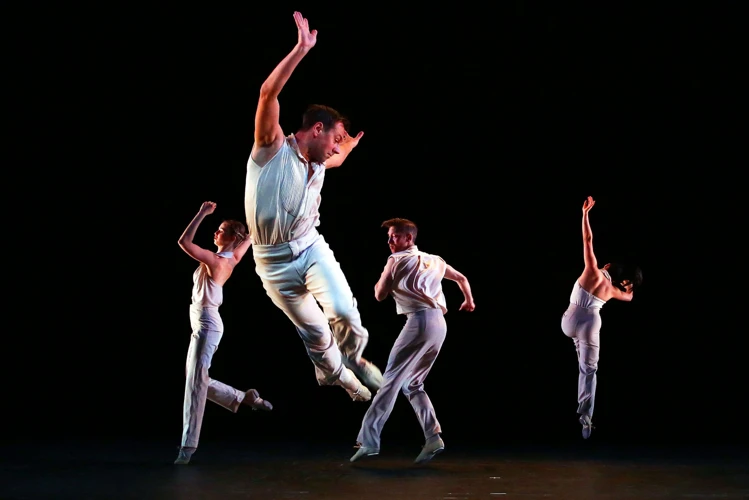
As the article continues to explore the most influential contemporary dancers, we cannot miss discussing the works of the brilliant mind of modern dance, Twyla Tharp. With a career spanning over five decades, Tharp has made waves in the world of dance with her unique style and unmatched creativity. Let’s take a closer look at the style and influence of this legendary artist.
Style
When it comes to the “style” of a contemporary dancer, it can be challenging to categorize their work in a neat box. Many of these influential contemporary dancers have developed their unique style, which blends various dance forms and techniques to create something truly remarkable. Here’s a brief overview of the style of each dancer:
Martha Graham: Known for her dramatic and stark style, Graham’s technique is characterized by sharp, angular movements, and a focus on the torso.
Alvin Ailey: Ailey’s style was influenced by his background in jazz and musical theater, resulting in a blend of grounded, fluid movement with explosive bursts of energy and athleticism.
Merce Cunningham: One of the pioneers of modern dance, Cunningham developed a style that focused on pure movement without any particular narrative or emotion attached to it. His style is characterized by strong, precise footwork and fluid upper body movements.
Pina Bausch: Bausch’s style is a combination of ballet, modern dance, and theater. She is infamous for her use of props and set pieces, which complement her dancers’ movements, making her work feel like a unified whole rather than separate elements.
Mikhail Baryshnikov: Baryshnikov’s style is influenced by his extensive background in ballet, but he has also explored more contemporary styles over the years. His technique is characterized by grace, precision, and remarkable athleticism.
Twyla Tharp: An eclectic choreographer, Tharp’s work blends classical ballet, jazz, and modern dance. Her style is characterized by intricate footwork and use of repetition, and her work often has a narrative or emotional arc attached to it.
William Forsythe: Forsythe’s style blends classical ballet with more contemporary forms, creating a unique and dynamic movement language. His work is characterized by sharp, precise movements and a focus on exploring the boundaries of the human body.
Akram Khan: Khan’s style is a unique blend of kathak, a classical Indian dance form, and contemporary dance. His work is characterized by the intricate footwork and fluid upper body movements found in kathak, combined with a more contemporary aesthetic.
Crystal Pite: Pite’s style is a blend of contemporary and classical techniques, creating a unique and powerful movement language. Her work often explores themes of conflict and struggle, using movement to tell a story.
Hofesh Shechter: Shechter’s style is heavily influenced by his background in hip hop, and his work combines this with contemporary and modern dance. His style is characterized by explosive, athletic movements and a focus on rhythm and musicality.
The style of contemporary dancers can be challenging to pin down, as many of them have developed their unique movement language over time. However, one thing is for sure: the work of these dancers is exciting, challenging, and always pushing the boundaries of what we think of as “dance.”
Influence
This section aims to outline the profound impact each of these influential contemporary dancers had on the world of dance. Here’s a closer look at each dancer’s influence:
Martha Graham
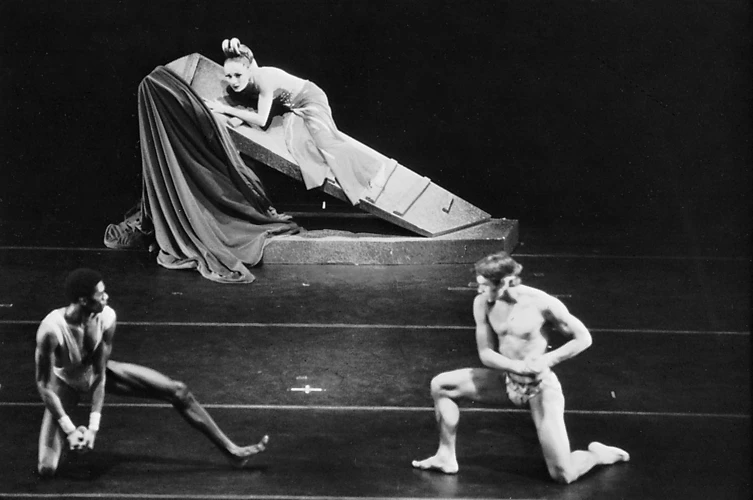
| Graham’s Influence on Dance | Revolutionized American dance by creating a new technique, which became known as “Graham technique,” that focused on the emotional and spiritual aspects of dance |
| Graham’s Influence on the Arts | Inspired many other artists, including musicians and visual artists, to collaborate and explore new artistic frontiers |
| Graham’s Influence on Society | Challenged traditional gender roles by portraying women as strong and powerful figures on stage |
Alvin Ailey
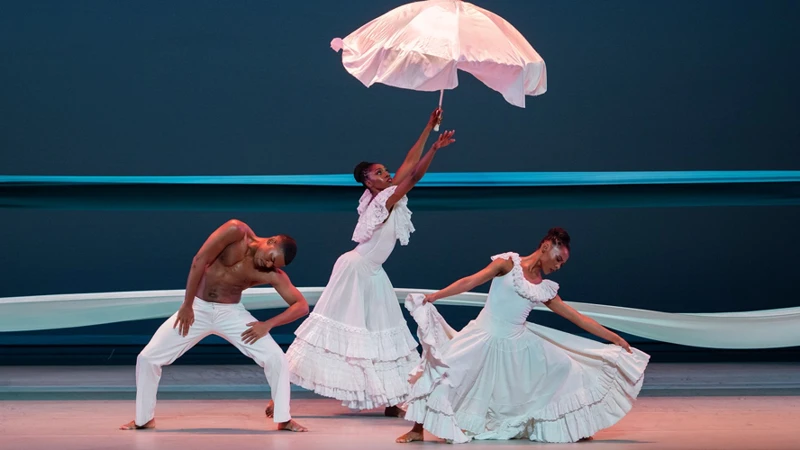
| Ailey’s Influence on Dance | Blended ballet with modern dance and African-American cultural traditions to create a unique and powerful style of dance |
| Ailey’s Influence on the Arts | Promoted diversity and inclusion in the arts, especially in terms of race and gender |
| Ailey’s Influence on Society | Brought cultural traditions from Africa and the African Diaspora into the mainstream American consciousness through dance |
Merce Cunningham

| Cunningham’s Influence on Dance | Experimented with new forms of improvisation, movement, and choreography, which challenged traditional ideas of dance and expanded its possibilities |
| Cunningham’s Influence on the Arts | Collaborated with other avant-garde artists, including composers, visual artists, and writers, to create groundbreaking performances that combined multiple art forms |
| Cunningham’s Influence on Society | Encouraged audiences to question their assumptions about what constitutes dance, art, and beauty, which helped to foster a more open-minded and inclusive culture |
Pina Bausch
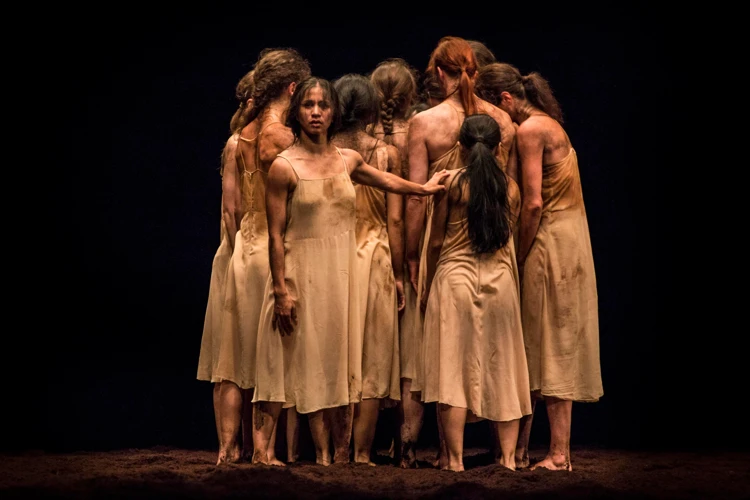
| Bausch’s Influence on Dance | Created a new style of dance-theatre that combined elements of dance, theater, and performance art to explore the human condition and express the full range of human emotions |
| Bausch’s Influence on the Arts | Inspired many other artists to push the boundaries of their own art forms and experiment with new modes of expression |
| Bausch’s Influence on Society | Challenges traditional gender roles and expectations by portraying men and women as equals in her performances |
Mikhail Baryshnikov
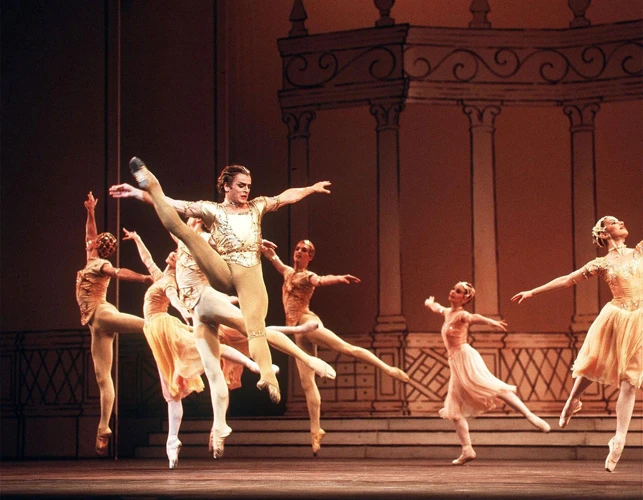
| Baryshnikov’s Influence on Dance | Pushed the limits of classical ballet by incorporating elements of modern dance and creating new works that defied convention |
| Baryshnikov’s Influence on the Arts | Collaborated with choreographers, dancers, and musicians from around the world in order to create works that reflect the diversity of the human experience |
| Baryshnikov’s Influence on Society | Brought the beauty and power of dance to a wider audience by performing in popular films and TV shows, which helped to raise awareness of the art form and its importance |
Twyla Tharp
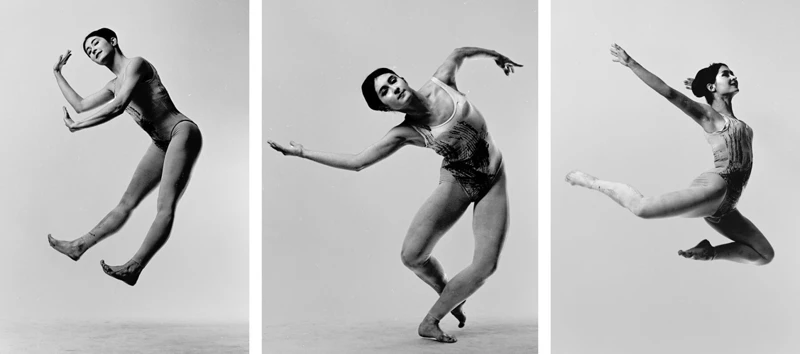
| Tharp’s Influence on Dance | Created a new style of dance that blended ballet, modern dance, and jazz, and incorporated elements of popular culture and everyday movements |
| Tharp’s Influence on the Arts | Collaborated with a wide range of artists and musicians, including David Byrne and Billy Joel, to create groundbreaking works that combined multiple art forms |
| Tharp’s Influence on Society | Challenged traditional ideas of what constitutes dance and who can be a dancer, which has helped to expand the boundaries of the art form and make it more inclusive |
William Forsythe

| Forsythe’s Influence on Dance | Created a new style of dance that combined elements of classical ballet with modern dance and improvisation, which created a dynamic and challenging new form of movement |
| Forsythe’s Influence on the Arts | Collaborated with other artists, including composers and visual artists, to create stunning and innovative works that expanded the boundaries of dance and art |
| Forsythe’s Influence on Society | Challenged traditional gender roles and expectations through his performances, which often subverted gender stereotypes and celebrated diversity and inclusivity |
Akram Khan
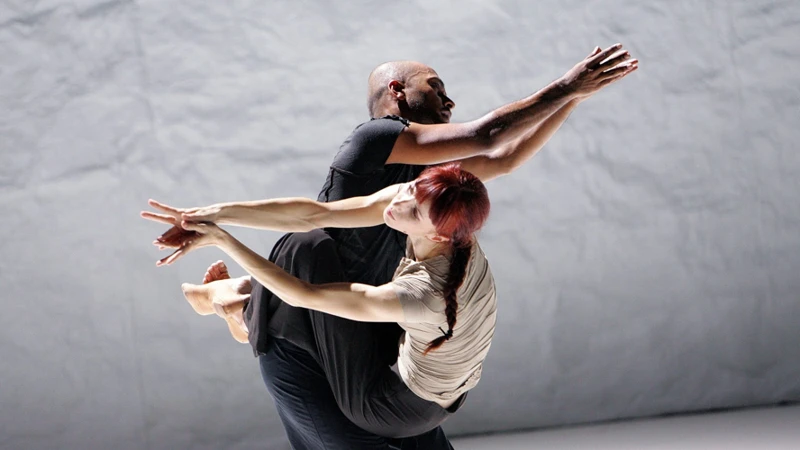
| Khan’s Influence on Dance | Blended elements of traditional Indian Kathak dance with contemporary dance forms to create a unique and powerful style that reflects the complexity of the modern world |
| Khan’s Influence on the Arts | Collaborated with a variety of artists, including musicians and visual artists, to create works that explore themes of identity, migration, and cultural exchange |
| Khan’s Influence on Society | Challenged stereotypes and preconceptions about South Asian culture through his works, which help to promote understanding and appreciation of diverse cultures |
Crystal Pite
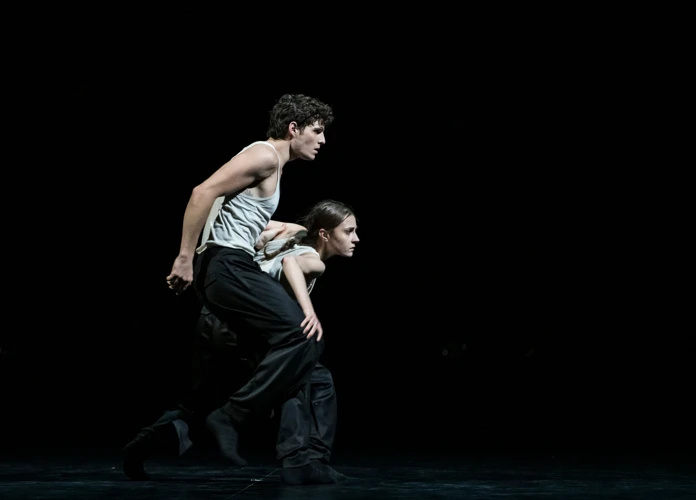
| Pite’s Influence on Dance | Created a new style of dance that seamlessly blends contemporary and classical techniques, which creates a visually stunning and emotionally powerful form of movement |
| Pite’s Influence on the Arts | Collaborated with other artists, including composers and visual artists, to create works that explore themes of power, politics, and the human experience |
| Pite’s Influence on Society | Challenges stereotypes and preconceptions about what constitutes dance and who can be a dancer, which helps to make the art form more inclusive and accessible |
Hofesh Shechter
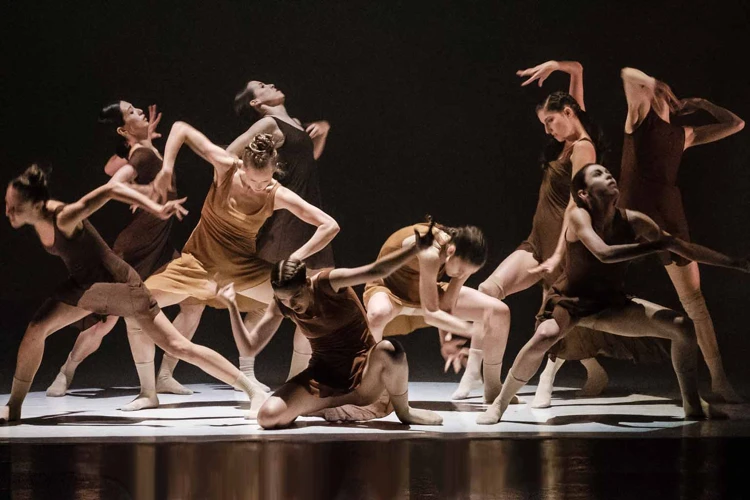
| Shechter’s Influence on Dance | Created a new style of dance that blends elements of contemporary dance, jazz, and street dance, which creates a dynamic and highly expressive form of movement |
| Shechter’s Influence on the Arts | Collaborated with a variety of artists and musicians, including the London Philharmonic Orchestra, to create stunning and innovative works that combine multiple art forms |
| Shechter’s Influence on Society | Challenges ideas about masculinity and power by portraying men in vulnerable and emotionally expressive ways, which helps to create a more nuanced and inclusive view of masculinity |
Each of these influential contemporary dancers has left an indelible mark on the world of dance and beyond, inspiring countless other artists and challenging audiences to rethink their assumptions about dance, art, and society.
7. William Forsythe
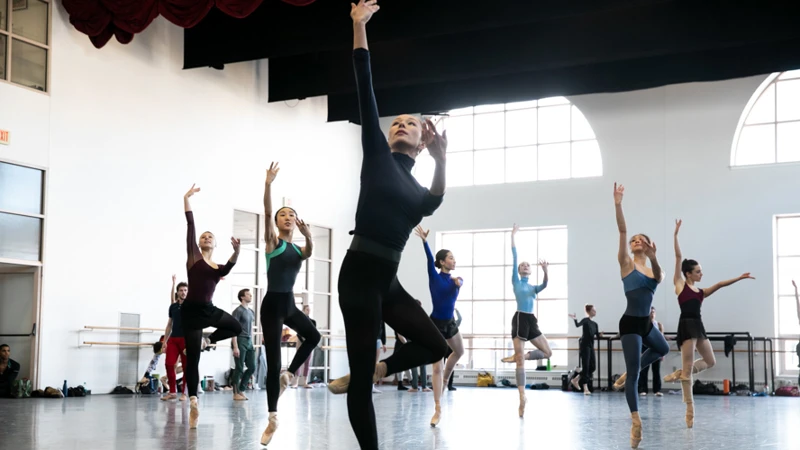
As we delve deeper into the world of contemporary dance, we have to mention one of the most innovative, daring, and thought-provoking choreographers of our time. This artist has been praised for his fusion of classical ballet with modern dance, his ability to disrupt traditional movement patterns, and his unwavering commitment to experimentation. Ladies and gentlemen, let’s talk about William Forsythe.
Style
When it comes to contemporary dance, each artist has a unique style that sets them apart from their peers. Let’s take a closer look at the distinctive styles of the 10 influential contemporary dancers you should know about:
| Martha Graham | Graham’s style was characterized by sharp, angular movements and a focus on the emotional expression of the dancer. She often used a contraction and release technique to create tension and release within each movement. |
| Alvin Ailey | Ailey’s style was heavily influenced by his background in jazz and African dance. His choreography often utilized fluid, flowing movements and showcased the athleticism of his dancers. |
| Merce Cunningham | Cunningham was known for his use of chance operations and his belief in the separation of movement and music. He often combined unpredictable, off-kilter movements with elegant lines and extensions. |
| Pina Bausch | Bausch’s style was characterized by a blend of dance and theatre, often incorporating spoken word and props into her pieces. Her movements were often grounded and pedestrian in nature, creating a sense of rawness and authenticity. |
| Mikhail Baryshnikov | Baryshnikov’s style was heavily influenced by his training in classical ballet, but he also incorporated elements of contemporary dance into his choreography. His movements were characterized by their precision and grace. |
| Twyla Tharp | Tharp’s style blended elements of classical ballet and modern dance, often incorporating popular music into her pieces. Her movements were characterized by their athleticism and dynamism. |
| William Forsythe | Forsythe’s style was marked by his innovative use of ballet technique, often subverting traditional ballet movements and playing with balance and alignment. He also incorporated elements of improvisation and partnering into his works. |
| Akram Khan | Khan’s style blended contemporary dance with traditional Indian kathak, creating a unique fusion of styles. His movements were often characterized by their intricate footwork and fluid upper body movements. |
| Crystal Pite | Pite’s style was marked by her use of gesture and narrative, often telling stories through movement. Her choreography was intricate and detail-oriented, with a focus on the interconnectivity of the dancers in her pieces. |
| Hofesh Shechter | Shechter’s style was heavily influenced by his background in Israeli folk dance, blending this traditional style with elements of contemporary and hip hop dance. His movements were often characterized by their explosive energy and intricate rhythms. |
Each of these influential contemporary dancers has their own unique style, which has helped to shape the world of contemporary dance as we know it today.
Influence
The influence of each of these 10 influential contemporary dancers cannot be overstated. Each dancer has left a profound and lasting impact on the world of dance, inspiring future generations of dancers and paving the way for new forms of artistic expression.
Martha Graham, known as the “Mother of Modern Dance,” created a new vocabulary of movement that has influenced generations of dancers. Alvin Ailey’s incorporation of African American cultural experiences into his work has also had a significant impact on the dance world. Merce Cunningham’s experimentation with chance operations and the integration of technology in his choreography pushed the boundaries of traditional dance.
Pina Bausch’s use of surrealism, personal experience, and collaboration created an entirely new form of dance theatre. Mikhail Baryshnikov’s virtuosic technique and artistry continue to inspire young dancers around the world. Twyla Tharp’s interdisciplinary approach, embracing music, theatre, and film, paved the way for new forms of dance performance.
William Forsythe’s innovations in ballet technique and intense physicality have had a profound influence on contemporary ballet, while Akram Khan’s incorporation of traditional Indian dance and themes has created a new form of cross-cultural fusion. Crystal Pite’s emotionally charged and visually stunning works have left audiences and dancers alike awed and inspired. Finally, Hofesh Shechter’s fusion of music and dance, incorporating elements of folk dance and rock music, has created an entirely new genre of dance performance.
Each of these dancers has made an indelible mark on the world of dance, inspiring future generations and pushing the boundaries of what dance can be. Their influences can be seen in the works of countless contemporary choreographers and dancers, and their legacies will continue to shape the dance world for years to come.
8. Akram Khan
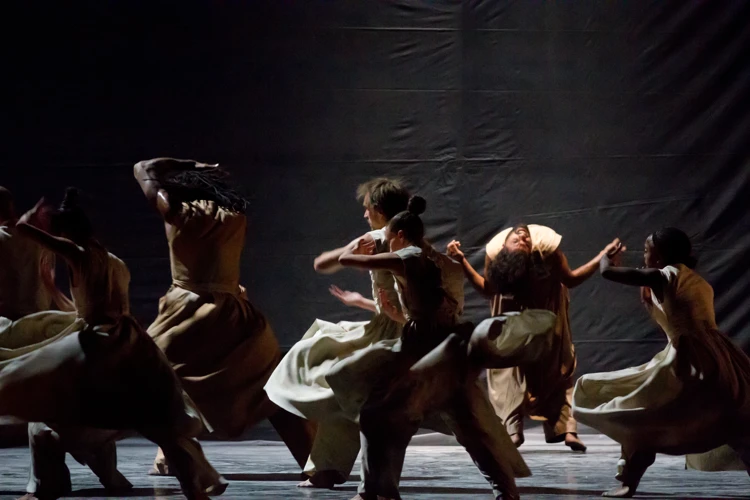
As we continue our exploration of influential contemporary dancers, we come across a figure whose unique and diverse background has informed his captivating style. Hailing from England and of Bangladeshi descent, Akram Khan has become renowned for his ability to seamlessly blend traditional Kathak with contemporary dance, creating a mesmerizing fusion of movement. Let’s take a closer look at his style and influence within the dance community.
Style
When it comes to style, each of the 10 influential contemporary dancers has their own unique approach to movement and expression. Here is a breakdown of their individual styles:
| Martha Graham | Graham’s style is characterized by a sharp, angular quality and a focus on the theatrical aspects of dance. She emphasized the use of the torso and the breath to convey emotion and storytelling, often exploring themes of struggle and empowerment. |
| Alvin Ailey | Ailey’s style blends elements of ballet, modern, and African dance. He believed in the power of dance to reflect the human experience and often drew inspiration from his own life and the stories of the African American community. His choreography is bold and dynamic, filled with intricate footwork and rhythmic patterns. |
| Merce Cunningham | Cunningham’s style is highly experimental and focused on exploring the possibilities of movement itself. He rejected the traditional narrative structures of dance and instead emphasized chance, improvisation, and collaboration with other artists, including visual designers and musicians. |
| Pina Bausch | Bausch’s style is known for its intense physicality and emotional intensity. She often incorporated elements of theater, such as costumes and props, into her work to create a surreal and dreamlike atmosphere. Her choreography frequently dealt with themes of love, longing, and loss. |
| Mikhail Baryshnikov | Baryshnikov’s style is characterized by his incredible technical ability and expressive range. He has trained in both classical ballet and contemporary dance, incorporating elements of both styles into his work. His movements are precise and fluid, with a focus on speed, agility, and strength. |
| Twyla Tharp | Tharp’s style is eclectic and draws from a wide range of influences, including ballet, jazz, and modern dance. She places a strong emphasis on music and frequently collaborates with composers to create original scores for her pieces. Her choreography is characterized by its complexity and athleticism, often featuring intricate partnering work and daring lifts. |
| William Forsythe | Forsythe’s style is highly technical and often pushes the limits of what is possible in dance. He is known for his use of improvisation and deconstruction of traditional ballet forms. His choreography typically features fast, intricate footwork and unexpected changes in direction. |
| Akram Khan | Khan’s style draws heavily from his training in the classical Indian dance form of kathak. He combines elements of kathak with contemporary dance and often incorporates live music into his performances. Khan’s movements are intricate and precise, with a focus on rhythm and dynamic phrasing. |
| Crystal Pite | Pite’s style is characterized by its emotional depth and use of gesture and storytelling. She often draws inspiration from literature and focuses on the interplay between dancers, exploring themes of identity and relationships. Her choreography is known for its lush, fluid quality and use of dynamic lifts and partnering work. |
| Hofesh Shechter | Shechter’s style combines elements of contemporary dance, ballet, and street dance. He often works with large groups of dancers, creating chaotic and frenzied scenes that explore themes of violence and power. His movements are explosive and percussive, with a focus on rhythm and timing. |
As we can see, each of these influential contemporary dancers has a unique and distinct style that reflects their individual artistic vision and approach to movement. While some draw from classical forms and others reject traditional structures altogether, all of these dancers have made a significant impact on the world of dance and continue to inspire new generations of artists.
Influence
The influence of each of these contemporary dancers is undeniable, with each having left their unique mark on the world of dance. Let’s take a closer look at the impact they have had:
| Dancer | Influence |
|---|---|
| Martha Graham | Graham’s pioneering technique and choreography continue to influence modern dance today. Her emphasis on the expressive power of movement and the psychological and emotional themes explored in her works have had a profound impact on the development of modern dance as an art form. |
| Alvin Ailey | Ailey brought African American cultural experiences and stories to the forefront of modern dance. His groundbreaking work helped to change perceptions and open doors for dancers of color. His company, the Alvin Ailey American Dance Theatre, continues to tour the world, bringing his message of hope and humanity to audiences everywhere. |
| Merce Cunningham | Cunningham’s exploration of the relationship between dance and technology transformed the way we think about movement and the stage. His use of chance procedures to create choreography challenged traditional ideas of authorship and creativity in dance and had a lasting impact on the field of post-modern dance. |
| Pina Bausch | Bausch’s unique blend of dance, theater, and performance art created a new form of expression that has influenced artists in a range of disciplines. Her focus on the emotional body and the exploration of gender and power dynamics have made her work a touchstone for contemporary artists seeking to break down traditional boundaries in their own work. |
| Mikhail Baryshnikov | Baryshnikov’s virtuosic technique and his ability to seamlessly blend a range of dance styles has made him one of the most influential dancers of his time. His willingness to take creative risks as a dancer and a choreographer has influenced generations of dancers and has helped to push the art form forward. |
| Twyla Tharp | Tharp’s fearless experimentation with a range of dance styles and genres has had a profound impact on contemporary dance. Her ability to merge classical ballet with modern dance, jazz, and even rock music has inspired a new generation of dance makers to explore the intersection of art forms. |
| William Forsythe | Forsythe’s innovations in dance and choreography have proven to be transformative. His focus on the deconstruction of classical ballet and his use of improvisation and collaboration have helped to redefine what it means to be a contemporary dancer in the 21st century. |
| Akram Khan | Khan’s ability to blend classical Indian kathak dance with contemporary dance has made him one of the most sought-after choreographers of his generation. His exploration of themes like identity, tradition, and migration have helped to open up new avenues of exploration for contemporary dance, particularly for dancers of diverse cultural backgrounds. |
| Crystal Pite | Pite’s ability to create emotionally charged, visually stunning works has earned her critical acclaim and a devoted following. Her exploration of themes like power, love, and loss has helped to make dance a more accessible and relevant art form for audiences around the world. |
| Hofesh Shechter | Shechter’s bold, uncompromising style has made him one of the most exciting voices in contemporary dance today. His exploration of themes related to politics, power, and violence has helped to bring dance to a wider audience and to make it a more socially engaged art form. |
Each of these ten dancers has had a significant impact on the development and direction of contemporary dance over the past century. Whether through their technical innovations, their creative vision, or their commitment to social and political issues, they have pushed the boundaries of what is possible in dance, inspiring generations of dancers to follow in their footsteps.
9. Crystal Pite
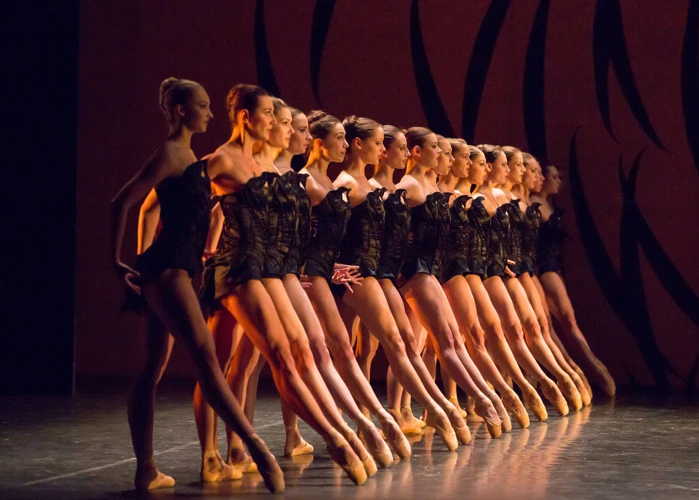
As we continue to highlight the influential contemporary dancers of our time, we cannot ignore the brilliance of one Crystal Pite. This Canadian-born dancer and choreographer has a style that is uniquely her own, one that is both mesmerizing and emotional. Known for her ability to seamlessly blend contemporary and classical techniques, Pite has become a force to be reckoned with in the world of dance. Let’s take a closer look at her unique style and the influence she has had on the dance world.
Style
As each influential contemporary dancer is unique, so too is their style of dance. Here is a breakdown of the unique styles of each dancer that have garnered them acclaim and recognition in the dance world:
| Dancer | Style |
|---|---|
| Martha Graham | Graham technique – characterized by the contraction and release of the muscles to create a strong and dynamic movement quality. Often exploring themes of Greek mythology and psychology. |
| Alvin Ailey | A fusion of ballet, jazz, and modern dance with a focus on storytelling, African-American experiences, and spirituality. |
| Merce Cunningham | Chance operations-driven approach to movement, where sequences of movement are created through random selection. Often incorporated technological collaborations and non-traditional performance spaces. |
| Pina Bausch | Tanztheater (dance theater) – a fusion of dance and theater with a focus on personal relationships, gender dynamics, and physicality. Often incorporated abstract sets and props. |
| Mikhail Baryshnikov | A fusion of classical ballet technique with modern and contemporary influences, characterized by strong technical abilities, athleticism, and artistry. |
| Twyla Tharp | Eclectic and interdisciplinary approach, blending classical ballet and modern dance with elements of jazz and popular dance. Often explores concepts of gender roles, psychology, and American culture. |
| William Forsythe | Deconstructed ballet technique incorporating improvisation and experimentation with structure and form. Often incorporates multimedia elements and collaborations with artists from other disciplines. |
| Akram Khan | Kathak-trained contemporary dance with a focus on storytelling, cultural identity, and fusion of Eastern and Western movement styles. Often incorporates multimedia elements and collaborations with musicians and composers. |
| Crystal Pite | A fusion of classical ballet and contemporary dance with a focus on intricate partnering and ensemble work. Often explores themes of human relationships, psychology, and society through abstract and narrative works. |
| Hofesh Shechter | Gritty, raw, and physical contemporary dance fusing traditional Jewish folk dance with contemporary movement. Often explores themes of violence, aggression, and social commentary through abstract and narrative works. |
These unique styles have not only made these dancers notable, but have also influenced the world of dance itself, inspiring future generations of dancers and choreographers.
Influence
The influence of each of these ten influential contemporary dancers has been far-reaching and significant. Here are some examples of the impact that each of these incredible artists has had:
Martha Graham:
- Graham’s technique and choreography have been taught in dance schools for decades.
- She was a mentor to many other famous dancers.
- Graham’s work helped to establish modern dance as an art form in the United States.
Alvin Ailey:
- Ailey’s dance company, the Alvin Ailey American Dance Theater, has become internationally renowned, touring extensively around the world.
- His work has touched on themes of race, social justice, and spirituality, bringing these topics to the forefront of contemporary dance.
- Ailey’s choreography is regularly performed by other contemporary dance companies.
Merce Cunningham:
- Cunningham was an innovator in his use of technology and collaborated with artists like John Cage to incorporate video and sound into his performances.
- He also founded an eponymous dance company, the Merce Cunningham Dance Company, which continued to perform long after his death.
- Cunningham’s emphasis on movement for movement’s sake was a significant break from the more narrative-driven dance styles that preceded him.
Pina Bausch:
- Bausch’s unique blend of dance, theater, and performance art inspired a new generation of interdisciplinary artists.
- Her work challenged traditional gender roles and explored themes of love, loss, and power.
- Bausch is widely credited with advancing the field of Tanztheater (dance theater).
Mikhail Baryshnikov:
- Baryshnikov’s mastery of ballet technique has made him a legend in the dance world.
- He has also worked in television and film, bringing dance to a wider audience.
- Baryshnikov’s collaborations with choreographers like Twyla Tharp have pushed the boundaries of what ballet can be.
Twyla Tharp:
- Tharp’s work blends ballet and modern dance, creating a unique hybrid style that has influenced countless other choreographers.
- She has worked across many different genres, including theater, film, and television.
- Tharp’s emphasis on improvisation has been a major influence on contemporary dance technique.
William Forsythe:
- Forsythe’s choreography has been praised for its intelligence and wit, challenging audiences to think about movement in new ways.
- He has also worked extensively in ballet and has been a major force in pushing the boundaries of the form.
- Forsythe has founded several dance companies, including the Forsythe Company (now disbanded) and the Dresden Frankfurt Dance Company.
Akram Khan:
- Khan’s work melds his traditional Indian dance training with contemporary Western styles.
- He has collaborated with musicians like Anoushka Shankar, creating powerful works that fuse dance and music.
- Khan’s choreography has been performed by major dance companies all over the world.
Crystal Pite:
- Pite’s choreography is known for its emotional intensity and inventive use of group dynamics.
- Her work has been praised for its exploration of themes like power, control, and loss.
- Pite founded her own dance company, Kidd Pivot, and has collaborated with other prominent choreographers like William Forsythe.
Hofesh Shechter:
- Shechter’s choreography blends contemporary dance with elements of folk dance and physical theater.
- He has also composed music for many of his own dance pieces, creating a truly interdisciplinary approach to performance.
- Shechter’s works have been performed by dance companies all over the world, and he has been hailed as one of the most exciting choreographers of his generation.
10. Hofesh Shechter
As the tenth influential contemporary dancer on our list, Hofesh Shechter has made a significant impact on the dance world with his unique style and artistic vision. With an impressive background in both music and dance, Shechter seamlessly blends different art forms to create captivating and thought-provoking performances. Let’s take a closer look at his style and influence in the dance world.
Style
When it comes to the style of these influential contemporary dancers, each one has a unique approach and signature moves that have made them stand out in the dance world. Here’s a closer look at the distinctive styles of each of the 10 dancers:
1. Martha Graham
- Graham’s style was characterized by sharp and angular movements, often emphasizing tension and release.
- She was known for her dramatic expressions and the way she used her torso to convey emotions.
2. Alvin Ailey
- Ailey’s style was a fusion of various techniques, including ballet, jazz, and African dance.
- He created choreography that was full of energy, athleticism, and emotion, often incorporating storytelling elements.
3. Merce Cunningham
- Cunningham’s style was marked by its abstraction, randomness, and experimentation.
- He believed in the value of movement for its own sake, rather than as a means of expression or storytelling.
4. Pina Bausch
- Bausch’s style was known for its emotional intensity and theatricality.
- She often incorporated elements of theater, visual art, and music into her choreography.
5. Mikhail Baryshnikov
- Baryshnikov was renowned for his incredible technical ability, particularly in ballet.
- His style was characterized by its fluidity, grace, and precision.
6. Twyla Tharp
- Tharp’s style was a blend of ballet, jazz, and modern dance, with a focus on athleticism and musicality.
- She often created works that were fast-paced and energetic, with complex choreography and intricate partnering.
7. William Forsythe
- Forsythe’s style was marked by its deconstruction of traditional ballet technique and emphasis on improvisation and experimentation.
- He often played with balance, weight, and gravity, creating movements that pushed the boundaries of what was thought possible in dance.
8. Akram Khan
- Khan’s style combines traditional Indian Kathak dance with contemporary dance forms.
- His movements are often percussive and rhythmic, with a sense of storytelling and emotion underlying the choreography.
9. Crystal Pite
- Pite’s style is known for its fluidity and emotional depth.
- She often creates works that are narrative-driven, exploring themes of human relationships and connection.
10. Hofesh Shechter
- Shechter’s style is characterized by its raw physicality and forceful movements, often set to driving musical scores.
- He creates works that are intense and emotionally charged, exploring themes of violence, control, and group dynamics.
From sharp and dramatic movements to fluid and emotive choreography, the diverse styles of these contemporary dancers have had a massive impact on the dance world and continue to inspire and influence dancers around the globe.
Influence
The influence that each of these influential contemporary dancers has had on the world of dance is immense and multifaceted. Here is a breakdown of their respective influences:
| Martha Graham | Graham’s style, characterized by its dramatic emotions and sharp, angular movements, has had a lasting impact on modern dance. She is widely considered to be the founder of contemporary dance and her technique is still taught and used by dancers all over the world. |
| Alvin Ailey | Ailey’s incorporation of African American cultural heritage into his work enriched the modern dance vocabulary and broadened the scope of what was considered “modern” dance. His dance company, the Alvin Ailey American Dance Theater, continues to inspire and promote young dancers of all backgrounds. |
| Merce Cunningham | Cunningham’s experimental approach to dance was groundbreaking and challenged traditional notions of choreography. He also collaborated with artists like John Cage and Robert Rauschenberg, which further expanded the boundaries of dance. His influence can be seen in the works of countless contemporary choreographers. |
| Pina Bausch | Bausch’s unique style, which combined elements of surrealism, theater and dance, transformed the way we think about performance. Her work was both intimate and universal, exploring complex themes like love, death, and human relationships. She continues to inspire choreographers and dancers worldwide even after her untimely death. |
| Mikhail Baryshnikov | Baryshnikov’s virtuosic technique and incredible stage presence made him a worldwide sensation. He pushed the boundaries of male ballet and brought ballet to popular culture. As an artistic director, he also provided a platform for emerging choreographers and dancers, continuing to shape the contemporary dance scene. |
| Twyla Tharp | Tharp’s use of popular music in her choreography was groundbreaking and inspired a new generation of contemporary dance enthusiasts. Her work bridged the gap between the avant-garde and the mainstream and helped bring modern dance to a wider audience. Her choreography continues to be performed all over the world. |
| William Forsythe | Forsythe’s exploration of the relationship between dance and technology revolutionized the way we think about dance. His use of interactive set design and multimedia elements turned dance into a multidisciplinary art form. His influence is still felt today, as choreographers continue to explore the possibilities of dance and technology. |
| Akram Khan | Khan’s unique blend of classical Indian dance and contemporary techniques has not only expanded the boundaries of dance but also challenged cultural stereotypes. His choreography explores themes of identity, migration, and spirituality, and he has been a vocal advocate for diversity and inclusivity in the arts. |
| Crystal Pite | Pite’s emotionally charged and physically demanding choreography has brought contemporary dance to new heights of expression. Her work speaks to the human experience and translates it into movement, creating a powerful form of storytelling. She continues to inspire and empower dancers and audiences around the world. |
| Hofesh Shechter | Shechter’s fusion of jazz, modern dance, and traditional Israeli folk dancing has created a dynamic and explosive style that has captivated audiences around the world. His use of percussion and music in his choreography has been particularly influential, and his dance company has produced a number of groundbreaking works that have inspired a new generation of choreographers and dancers. |
These ten influential contemporary dancers have left an indelible mark on the world of dance, and their innovations and contributions will continue to inspire future generations of performers and audiences alike.
Conclusion
After exploring the diverse styles and influences of these ten influential contemporary dancers, it is clear that the world of dance is constantly evolving and pushing the boundaries of creativity and expression. From the sharp, angular movements of William Forsythe to the emotionally-charged performances of Pina Bausch, each of these dancers has left a significant impact on the world of dance.
It’s important to recognize that these ten dancers are just a small selection of the vast array of talent and innovation in today’s dance scene. Each individual brings their unique perspective and approach to the art form, inspiring future generations of dancers to continue pushing the boundaries.
Overall, the legacy of these contemporary dancers serves as a reminder of the power of movement and expression in connecting people across cultures and generations. Their contributions and influence will continue to resonate for years to come, leaving a lasting impact on the world of dance.
Preguntas frecuentes
Who is Martha Graham?
Martha Graham is a highly influential American dancer and choreographer who is known as the “mother of modern dance.”
What is Martha Graham’s style of dance?
Martha Graham’s style of dance, called “Graham technique,” utilizes sharp, angular movements and often incorporates themes of psychological and emotional struggle.
Who was Alvin Ailey?
Alvin Ailey was a highly celebrated American dancer and choreographer who founded the Alvin Ailey American Dance Theater.
What is Alvin Ailey’s style of dance?
Alvin Ailey’s style of dance incorporates elements of modern, jazz, and African dance, resulting in a unique and highly expressive style.
Who is Merce Cunningham?
Merce Cunningham was a highly influential American dancer and choreographer who is known for his avant-garde approach to dance.
What is Merce Cunningham’s style of dance?
Merce Cunningham’s style of dance, known as “Cunningham technique,” emphasizes free-flowing movement and eschews traditional storylines or narrative structures.
Who was Pina Bausch?
Pina Bausch was a highly acclaimed German dancer and choreographer who was known for incorporating elements of theater into her performances.
What is Pina Bausch’s style of dance?
Pina Bausch’s style of dance, known as “Tanztheater,” combines elements of dance, theater, and performance art to create highly emotive and visually striking pieces.
Who is Mikhail Baryshnikov?
Mikhail Baryshnikov is a highly acclaimed Russian dancer and choreographer who is known for his exceptional technique and athleticism.
What is Mikhail Baryshnikov’s style of dance?
Mikhail Baryshnikov’s style of dance blends elements of classical ballet with contemporary movements, resulting in a highly expressive and fluid style.
Who is Akram Khan?
Akram Khan is a British dancer and choreographer who draws on influences from his Bangladeshi heritage to create highly evocative and culturally rich performances.
What is Akram Khan’s style of dance?
Akram Khan’s style of dance draws on elements of classical Indian dance, contemporary dance, and theater to create intricate and highly expressive performances.

